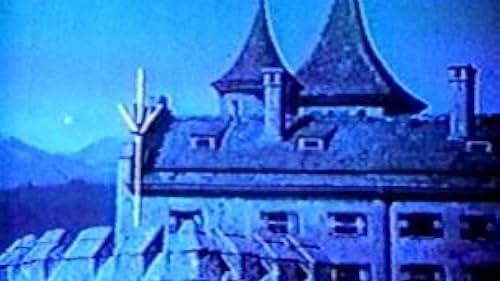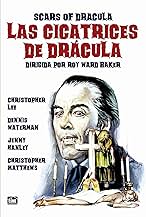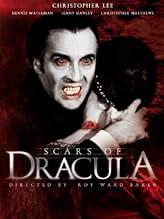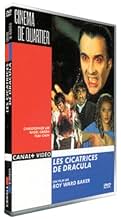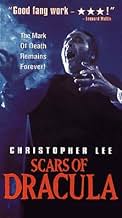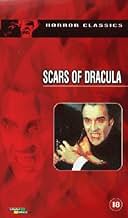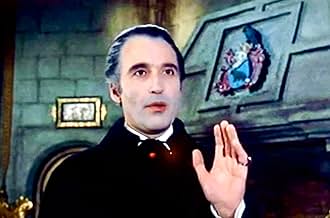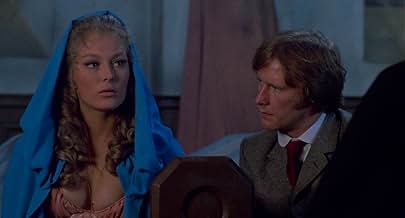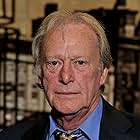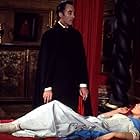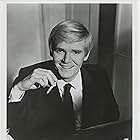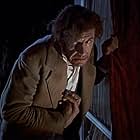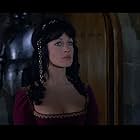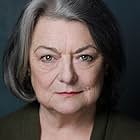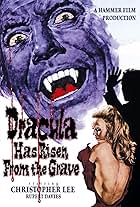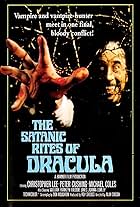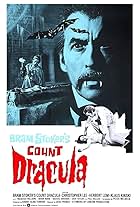1970's "Scars of Dracula" topped the only Dracula-Frankenstein double bill ever offered by Hammer, Christopher Lee's 5th performance in the series coupled with the already completed "The Horror of Frankenstein" for a brief run on the drive-in circuit by American Continental Films (along with "Lust for a Vampire"), quickly sold to television and popping up in record time before disappearing from the airwaves. "Scars" began shooting only five months after the previous Hammer entry "Taste the Blood of Dracula," seven months after Jesus Franco's adaptation "Count Dracula," and actually returns to Stoker for many plot devices that had never been done in films. The climax of "Taste" had Dracula destroyed in a London church, kicking things off here back in Transylvania with his ashes revived by dripping blood from a very large and rather phony rubber bat (the only previous entry that employed bats was 1960's "The Brides of Dracula," the one without Lee). The torch bearing villagers decide to storm Castle Dracula for a proper burning, only to return to their loved ones at the church mutilated by vengeful bats in their absence (the same set reused in Jimmy Sangster's "Lust for a Vampire"). The philandering Paul Carlson (Christopher Matthews) escapes the clutches of the law only to find himself arriving at Castle Dracula, welcomed by the beautiful Tania (Anouska Hempel) and her master, introducing himself with three simple yet familiar words: "I am Dracula." With no possible escape, Paul tries to make himself comfortable, receiving a visit from Tania as willing bed warmer, having just been bitten by Dracula (only the second time we see Lee perform the actual bite). The approaching dawn has Tania ready to sink her own fangs into her lover's neck, an enraged Dracula emerging to stab her repeatedly in an unexpected and illogical demise for a vampire. Paul discovers an opening some yards below his room, making his way down the wall to find himself hopelessly trapped in the Count's private sanctuary, later found impaled on a meat hook. Director Roy Ward Baker was proud of restoring the Count's ability to use creatures of the night to perform his bidding, either as winged angels of death or like carrier pigeons, as well as having doors open and close by themselves whenever Dracula requires. By far the most notable idea from Stoker was the sight of Dracula crawling down the castle wall (recreated for Frank Langella), seen here as walking up the wall from his hidden coffin location. Lee also receives more screen time than in any other Hammer entry, over 11 minutes for a more balanced approach that keeps him involved right from the start. Simon Carlson (Dennis Waterman) and girlfriend Sarah (Jenny Hanley) search for his missing brother, barely escaping Castle Dracula through the help of the Count's manservant Klove (Patrick Troughton), who keeps a framed photo of the lovely Sarah and only defies his master in her defense. Klove was introduced in Lee's second entry "Dracula - Prince of Darkness," earning forgiveness by bringing new blood in the shapely form of Wendy Hamilton as Julie, instantly killed by Dracula's bite. The idea of a church desecrated by evil previously appeared in "Dracula Has Risen from the Grave," the ineffectual priest played by the distinguished Michael Gwynn, Peter Cushing's creation from 1958's "The Revenge of Frankenstein." Despite the savage critical backlash upon release (even cofeature "The Horror of Frankenstein" was received with greater leniency), Lee himself was surprised at how well it turned out during his 2000 commentary track, perhaps mollified by the numerous Stoker touches that he was usually calling for and, for once, accepted by screenwriter Anthony Hinds, under his regular pseudonym John Elder. This turned out to be the final Gothic sequel, two modern era vehicles to close out Lee's participation, "Dracula A. D. 1972" and "The Satanic Rites of Dracula."


